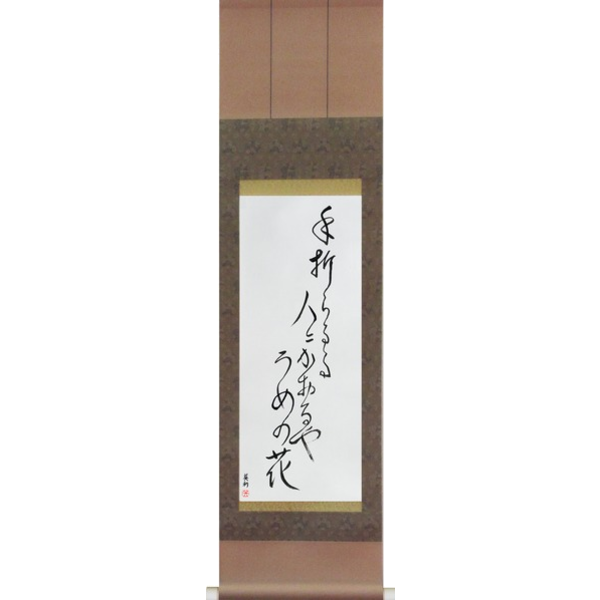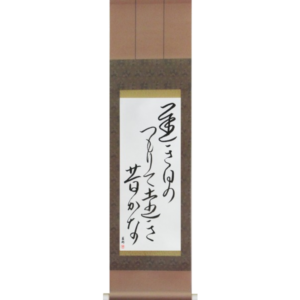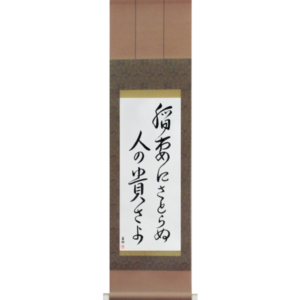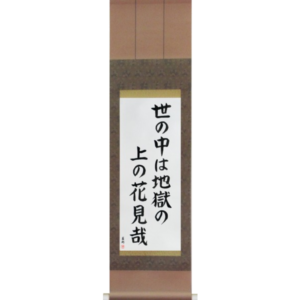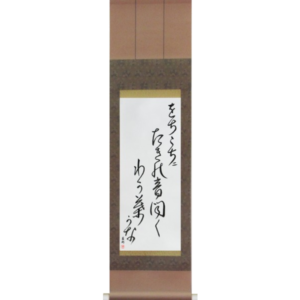H3020 Haiku by Chiyojo – To the person breaking off the branch …
by Master Japanese Calligrapher Eri Takase
To the person breaking off the branch
giving its fragrance
the plum blossom. [1]
|
taoraruru hito ni kaoru ya ume no hana |
手折らるゝ 人に薫るや 梅の花 |
| chiyojo | 千代女 |
According to Blyth, this was written to say “Return good for evil”. Indeed the person breaking the plum branch committed a wrong, but still, the plum blossom gave of itself. [2] Donegan interprets this as advising “compassion instead of revenge”. [3]
The breaking of the branch seems so masculine and the plum blossom giving its fragrance seems so feminine. I can’t help but think that Chiyojo was referring to being treated unkindly by a man she cared about but rather than responding in kind, she responded with feminine kindness.
Blyth suggests the translation:
The flower of the plum
Gives its scent
To him who breaks off the branch. [2]
Asataro Miyamori suggests the translation:
The plum-blossoms give their perfume
To the man who broke off the branch. [4]
Harold Henderson suggests the translation:
To those who come
and break them, they give fragrance-
blossoms of the plum. [6]
Calligraphy Notes:
1) The character ゝ repeats the last character. So るる and るゝ are both read ruru. Master Takase uses both in the designs making her selection based on which she thinks will look and balance better.
2) 薫る (kaoru) meaning “to smell sweet; to be fragrant” is written at least three different ways 香る, 薫る, and 馨る. We use the second.
Translation Notes:
手折らるゝ
人に薫るや
梅の花1) “Chiyojo” also went by Chiyo-ni. According to Patricia Donegan, “Chiyo-ni’s given birthname was not Chiyo-ni but ‘Chiyo,’ meaning ‘a thousand years’; the feminine suffix ‘jo’ was added, so she was sometimes called ‘Chiyo-jo’ until she changed her name to ‘Chiyo-ni,’ when she added the suffix ‘ni’ (nun). However, like many poets in Japan, she used many pen names in her lifetime.” [5]
Blyth ascribes the poem to Chiyojo 千代女. [2] Miyamori ascribes the poem to Chiyo-Ni 千代尼. [4]
2) 手折らるゝ (taoraruru) is from the verb 手折る (taoru) meaning “(1) to break by hand (e.g. a flower); to break off (a twig); to pluck (a flower, a bud); (2) to make a young woman one’s own thing”.
3) 人 (hito) means “person” and not necessarily a “man”. Japanese is most often gender neutral. And, conveniently, ambiguous.
4) 梅の花 (ume no hana) is commonly translated as “plum blossoms”. 梅 (ume) meaning “plum; Japanese apricot; prunus mume” and 花 (hana). As an interesting side note, the botanical name is “prunus mume” and, at one point, ume was read mume.
References:
[1] Translation by Timothy L. Jackowski, Takase Studios, LLC.
[2] 220.
[3] 108.
[4] 430.
[5] 26.
[6] 83.
